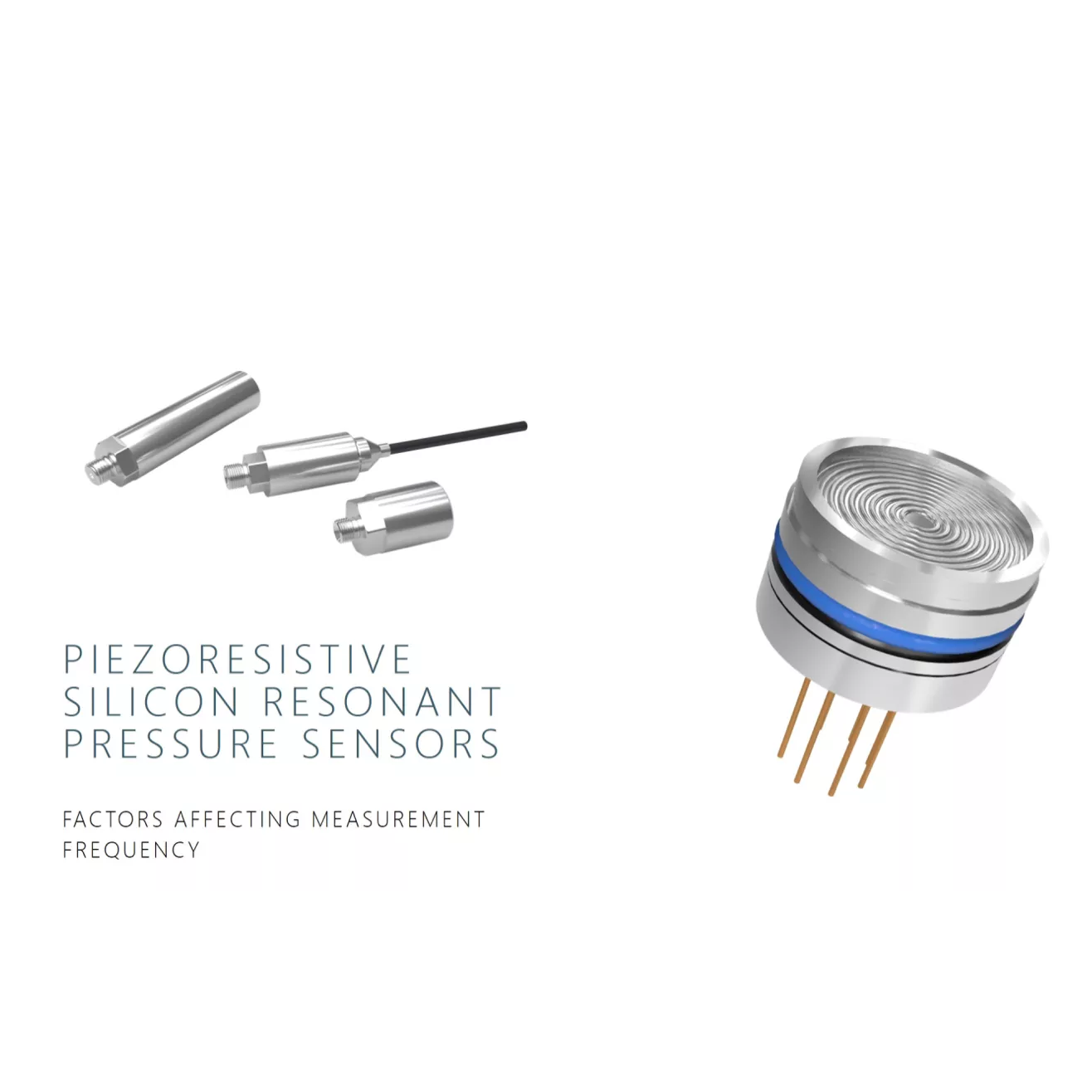Views: 0 Author: Site Editor Publish Time: 2024-12-03 Origin: Site












The following factors can affect the measurement frequency of piezoresistive silicon resonant pressure sensors:
I.Sensor - related Factors
Structural Design:
Resonator Structure: Design parameters such as the shape, size, and mass distribution of the resonator directly affect its natural frequency. For example, resonators of different shapes (such as rectangular, circular, etc.) have different vibration modes and frequency characteristics. A resonator with a larger mass usually has a lower resonant frequency, while a resonator with a smaller mass has a relatively higher resonant frequency.
Support Structure: The way the resonator is supported also has an impact on the measured frequency. If the support structure is too flexible, it may lead to a reduction in the resonant frequency and be more susceptible to external interference. On the other hand, if the support structure is too rigid, it may limit the vibration amplitude of the resonator and affect the sensitivity of the sensor.
Electrode Arrangement: The position and shape of the electrodes can affect the distribution of the electric field, which in turn affects the vibration characteristics and frequency of the resonator. A reasonable electrode arrangement can improve the performance and stability of the sensor.
Material Properties:
The Elastic Modulus of Silicon Material: Silicon is one of the main materials of piezoresistive silicon resonant pressure sensors. Its elastic modulus determines the degree of deformation of the silicon diaphragm under pressure. Silicon materials with a larger elastic modulus will have less deformation under the same pressure, resulting in a smaller change in resonant frequency. Conversely, silicon materials with a smaller elastic modulus will have more deformation under the same pressure, and the change in resonant frequency will also be larger.
Piezoresistive Coefficient: The piezoresistive coefficient reflects the degree of change in the resistance of silicon material under stress. Materials with a larger piezoresistive coefficient are more sensitive to pressure changes and can produce larger resistance changes, thus affecting the output signal and measurement frequency of the sensor.
Temperature Coefficient: The temperature coefficient of silicon material affects the performance of the sensor at different temperatures. Temperature changes can lead to changes in the physical properties of the silicon material, thereby affecting the resonant frequency. For example, an increase in temperature may reduce the elastic modulus of the silicon material, resulting in a decrease in the resonant frequency.
II. Environmental Factors
Temperature:Temperature changes can cause the thermal expansion and contraction of silicon materials, thus changing the size and structure of the resonator and further affecting the measurement frequency. Generally speaking, an increase in temperature will lead to a decrease in the resonant frequency, while a decrease in temperature will lead to an increase in the resonant frequency.
Temperature can also affect the electrical properties such as resistivity and piezoresistive coefficient of silicon materials, thus changing the output signal and measurement frequency of the sensor. For example, an increase in temperature may increase the resistivity, resulting in a decrease in the sensitivity of the sensor.
Humidity: A high - humidity environment may lead to the adsorption of moisture inside the sensor, thus changing the electrical and mechanical properties of the silicon material. The adsorption of moisture may reduce the resistivity of the silicon material and change the piezoresistive coefficient, and then affect the measurement frequency. Humidity may also cause the encapsulation material of the sensor to expand or contract, affecting the structural stability of the resonator and the measurement frequency.
Rate of Pressure Change:When the rate of pressure change is relatively fast, the resonator may not respond to the pressure change in a timely manner, resulting in a lag in the measurement frequency. This is because the vibration of the resonator requires a certain amount of time to reach a stable state, and rapid pressure changes may cause the resonator to have no time to adjust its vibration state.
The rate of pressure change may also lead to a non - linear response of the resonator, thus affecting the accuracy of the measurement frequency. Under a high rate of pressure change, the vibration of the resonator may exhibit non - linear behavior, so that the relationship between the measurement frequency and pressure is no longer linear.
Electromagnetic Interference:Electromagnetic interference in the surrounding environment may affect the sensor's circuits and signal transmission, resulting in fluctuations or errors in the measurement frequency. Electromagnetic interference may come from other electronic devices, power lines, radio signals, and so on.Strong electromagnetic interference may distort the sensor's output signal and even cause the sensor to fail to work properly. In order to reduce the impact of electromagnetic interference, measures such as shielding and filtering can be taken.
III. Measurement Circuit Factors
Excitation Signal Source:The frequency stability and amplitude stability of the excitation signal have a significant impact on the measurement frequency. If the frequency of the excitation signal is unstable, it may lead to a change in the vibration frequency of the resonator, thereby affecting the measurement results.
The amplitude of the excitation signal also affects the vibration amplitude and frequency of the resonator. Generally speaking, a proper increase in the amplitude of the excitation signal can improve the sensitivity of the sensor. However, an excessively large amplitude of the excitation signal may cause the resonator to enter a non - linear working region, resulting in inaccurate measurement of the frequency.
Signal Detection and Processing Circuit:The parameters such as the sensitivity, noise level, and linearity of the signal detection circuit will affect the quality of the output signal of the sensor, and further affect the accuracy of the measurement frequency. For example, a highly sensitive detection circuit can detect weak signal changes, but it may also be more susceptible to noise interference.
The parameter settings of components such as filters and amplifiers in the signal processing circuit will also have an impact on the measurement frequency. Reasonably selecting the cutoff frequency of the filter and the gain of the amplifier can improve the quality of the signal and the measurement accuracy.